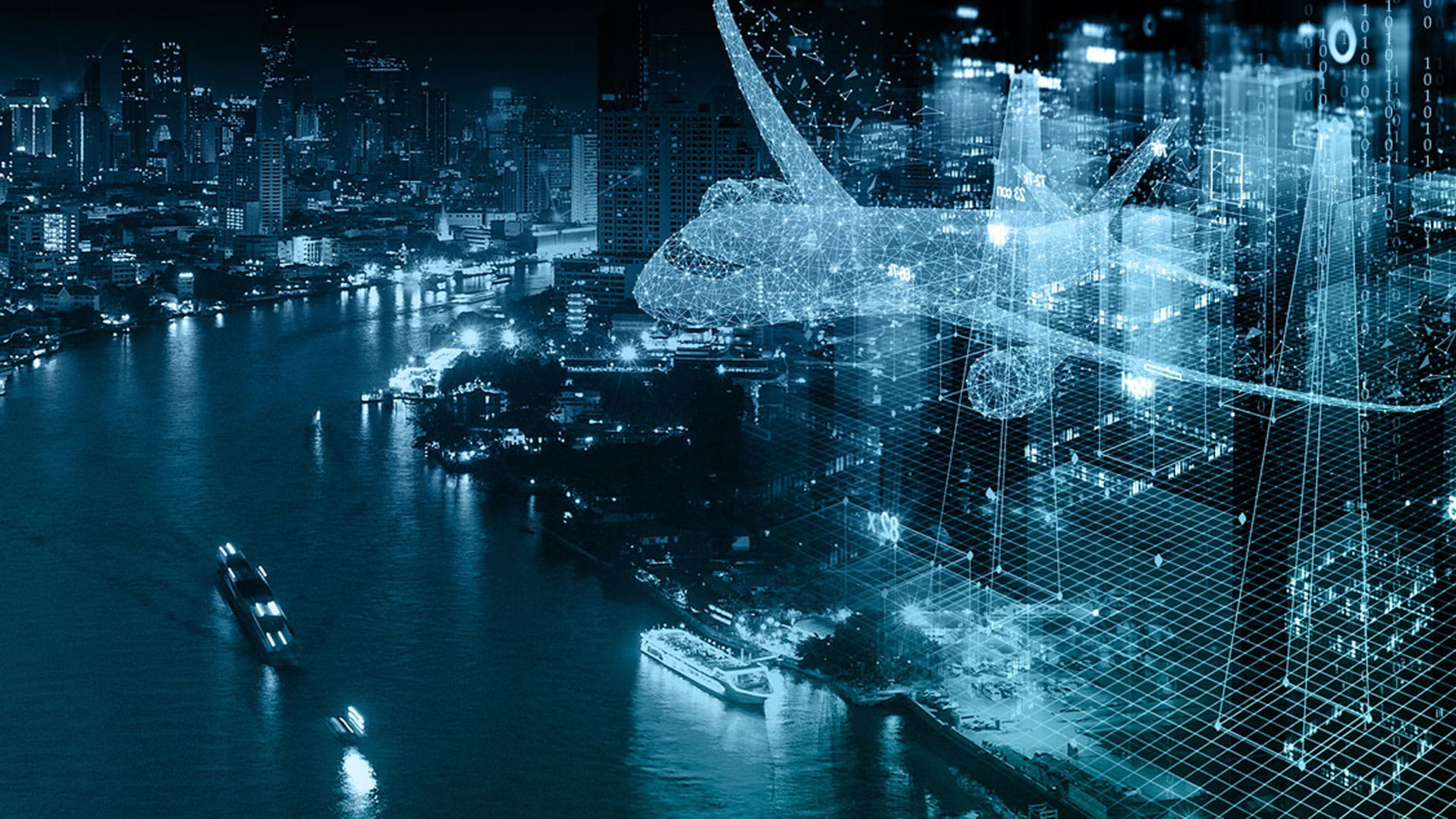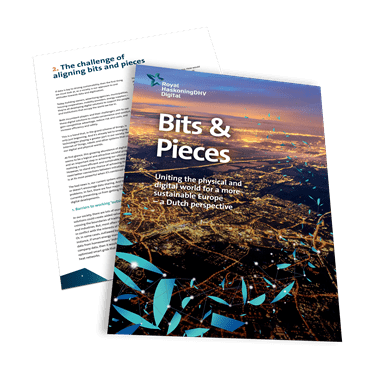The business case for digital twins
A practical guide to starting your digital twin journey

Across all sectors and regions, I’ve noticed an increase in the interest and adoption of digital twins. More and more organisations, institutions and countries are embracing the concept and acknowledging that it’s not just the next big thing in technology, but a powerful concept driving the transition towards more digitised physical environments.
But knowing where to begin isn’t easy. In this blog, I’ll explore the business case for digital twins – from small scale process improvements to national implementations – and provide guidance on how to get started.
But knowing where to begin isn’t easy. In this blog, I’ll explore the business case for digital twins – from small scale process improvements to national implementations – and provide guidance on how to get started.
Key take-aways
2. Where to start your digital twin journey
3. How to build a business case
The organisational and societal potential
Digital twins can play a vital role in both an organisational and societal context.With COVID-19 and climate change concerns causing an urgent need to reassess the way we view and run our national infrastructures, it’s likely digital twins will have a vital role to play in the coming years – as I’ve discussed in more detail in our national digital twin whitepaper.
In fact, over the last few months, we’ve seen a strong increase in adoption at a global, national and sector level.
Organisations and societies are beginning to see how digital twins can help us better understand the interconnected social and environmental outcomes of the changes we make. And understanding these systems is vital in building a better society.
They can also help us simplify and optimise the increasingly complex infrastructures that underpin that society.
Ultimately, by augmenting physical assets with digital insights, we can create smarter, more sustainable data-driven environments that have a long and lasting impact. And the more connected these digital twins are, the bigger the return on investment.
It’s becoming increasingly clear that the possibilities for added value are almost endless; from factory floors to smart cities and beyond. But knowing where to begin isn’t easy. One of the challenges people face is calculating the costs versus the benefits of digital twins.
With that in mind, this blog will explore the business case for digital twins – from small scale process improvements, to national implementations – and provide guidance on how to get started.
The need to define value
As digital twins move from being an experimental concept to a core part of our organisations and societies, it becomes increasingly important to be able to identify ROI and attach value to them.Perhaps the biggest measurable advantage of digital twinning is the ability to make better, quicker and ultimately more informed decisions, across the lifecycle of your assets or operations.
For example, you can test and de-risk environments before making physical changes, improve the utilisation of assets, optimise supply chains, and drive new efficiencies – all thanks to a new level of insight into both the current state of affairs and what the future could look like under different conditions.
Digital twins also provide the opportunity to augment human activities and strengthen learning with the integration of AI.
In fact, with the continuous capture and analysis of data, and the ability to predict and prescribe changes, an AI-driven digital twin can help us improve the physical world in a fully automated way.
But to realise these values, it is important to see digital twinning as a transformation: people, process and technology need to be brought together in a holistic manner. And there are numerous hurdles to overcome before this transformation pays off.
For example, data quality is especially important when deploying a digital twin. And those with legacy systems may find themselves facing steep challenges – and steeper costs.
But there are also human elements to consider. As with all major transitions, the willingness of people to embrace new technology will impact the potential return of your projects. And since digital twins use new technologies like AI, predictive simulation and data analytics, it’s important to consider your overall digital maturity and the effect that will have on your adoption.
Mature organisations, with better data management and governance in place, will inevitably see greater value from a digital twin. However, less mature organisations may find the implementation of a valuable way to embark on their digitisation journey.
After all, digital twins don’t have to be huge in scope. It’s entirely possible to start small and work your way up.
Building your business case
So, how do you build a business case for your digital twin, and make sure you make the right decisions?The first step is to ensure that there is an aligned understanding of what a digital twin should be, as outlined above. That means not just thinking of it as a technology investment, but a new, transformational concept that enables your organisation or society to adapt its physical environment and operating model, using the power of data and digital technology.
With this mindset, I see organisations starting their digital twin journey from three perspectives:
-
At an organisational level:
-
At an operational level:
-
From an asset life cycle perspective:
Whatever perspectives you’re starting from, in the end, will need to come together and this way gradually building an ecosystem of digital twins.
In this journey and to build a solid business case, the identification of the areas – so-called use cases - where a digital twin would add the most value is key.
Often use cases around dynamic, fast-changing environments are most relevant, where the actionable insights and predictive and prescriptive powers of a twin can be hugely important.
Cost vs. Benefit
Once you have established and evaluated the potential benefits of these use cases, you need to weigh each project’s potential value against the costs of data acquisition and technological investment.Part of the cost assessment is to understand if you can deploy existing solutions, like algorithms, or if you’ll need to create customised solutions for your use case.
At Royal HaskoningDHV Digital, we’ve been creating these algorithms for the last 25 years around specific use cases like wastewater treatment, traffic management, crowd management, and logistics. But, in other more specific cases, and where there are no ‘off the shelf’ solutions available, we’ve collaborated with domain experts (like energy, safety, water, or logistics), enterprise architects, data engineers and data scientists to create bespoke alternatives.
This use case assessment can be complex and shouldn’t be done in isolation. Depending on the perspective, it should be aligned with the relevant strategic planning and investment agenda. For example, integrating your digital twin in the capital expenditure of your assets can help to realise synergies and optimise the business case.
Prioritising the use cases is a key step to build a roadmap for your digital twinning. But it’s also important to take factors like interoperability, security, and data governance into account. Since, for a digital twin to provide the most value in the long run, it shouldn’t operate as an independent entity. Ultimately, you want to gradually build an ecosystem of digital twins that feed into each other and provide exponential rewards.
Therefore, an important element to take into account is the top-level decisions and guiding principles about how to store, manage and govern data – and which data standards to apply to ensure an ecosystem is effective.
As this ecosystem grows, continually analysing and optimising the results is an essential part of its continuous improvement.
Ultimately, this ecosystem can eventually even be extended across multiple organisations, helping you to add more value by partnering with others in your industry – or adjacent ones.
A long road ahead
As hard-hit industries begin to recover from the effects of COVID-19, pressure has never been higher to perform, and digital twins are likely to play a huge role for those that succeed.Digital transformation is now vital for both short and long-term success. And any way to boost operational efficiency, uncover new insights, increase sustainability, and provide new offerings can be considered a huge advantage.
Of course, the same is true for society as a whole, which has suffered its own impacts from the pandemic, and faces a raft of other challenges as the world continues to change at pace.
With this blog, I have shared some of my views on the best way to get started and create value with digital twins. If you’d like to discuss this further, please reach out to me, via the ‘contact us’ form below.
White paper
National digital twin: bits & pieces white paper
For an in-depth look at the technologies behind a more sustainable tomorrow, read the full paper.

Stayupdated
Keeping up to date with the latest digital twin news? We've got you covered
